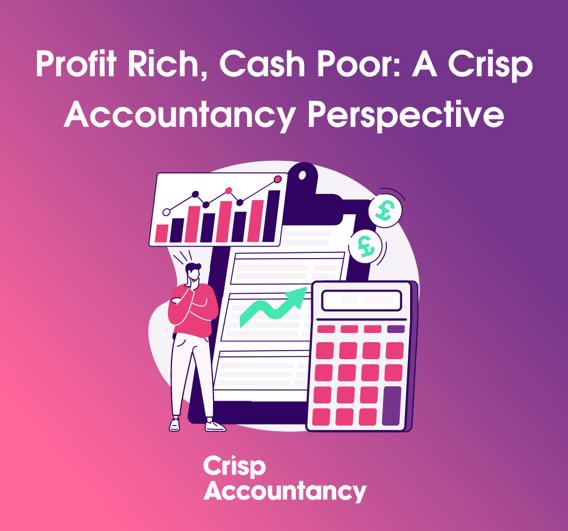
Many profitable businesses struggle and even fail due to cash flow issues. The misconception that profit equals cash is widespread and can be detrimental to business health. At Crisp Accountancy, we believe that grasping the difference between profit and cash flow is crucial for any business owner.
Have you ever wondered why a profitable month doesn’t reflect in your bank balance? Let’s delve into an example to clarify this common conundrum.
Case Study: CreativeWeb Solutions
CreativeWeb Solutions, a digital agency, offers web design, SEO, and digital marketing services. Here’s a simplified Profit and Loss (P&L) statement for July:
Gross Profit (Sales - COGS): £30,000
Net Profit Before Tax (Gross Profit - Overheads): £14,000
A quick look at the P&L might lead one to believe the business had a great month. However, the cash flow statement tells a different story.
Cash Flow for July
Cash Inflows: £20,000
Cash Outflows: £66,000
Closing Bank Balance: £-6,000
Despite a £14,000 profit, CreativeWeb Solutions faced a negative cash flow of £26,000, ending the month with a £6,000 overdraft. So, where did it all go wrong?
Key Factors Affecting Cash Flow
The disparity between profit and cash is significant. Profit can be adjusted through accounting policies, but cash is tangible and accurately reflected in your bank balance.
At Crisp Accountancy, we help you navigate these complexities. Remember, your profit is an accounting construct, while your cash flow is the lifeline of your business. Let’s ensure your business remains cash-flow positive, even when it’s turning a profit.
For tailored advice and comprehensive financial management, contact us at Crisp Accountancy. Together, we’ll turn your profitable months into positive cash flow experiences.